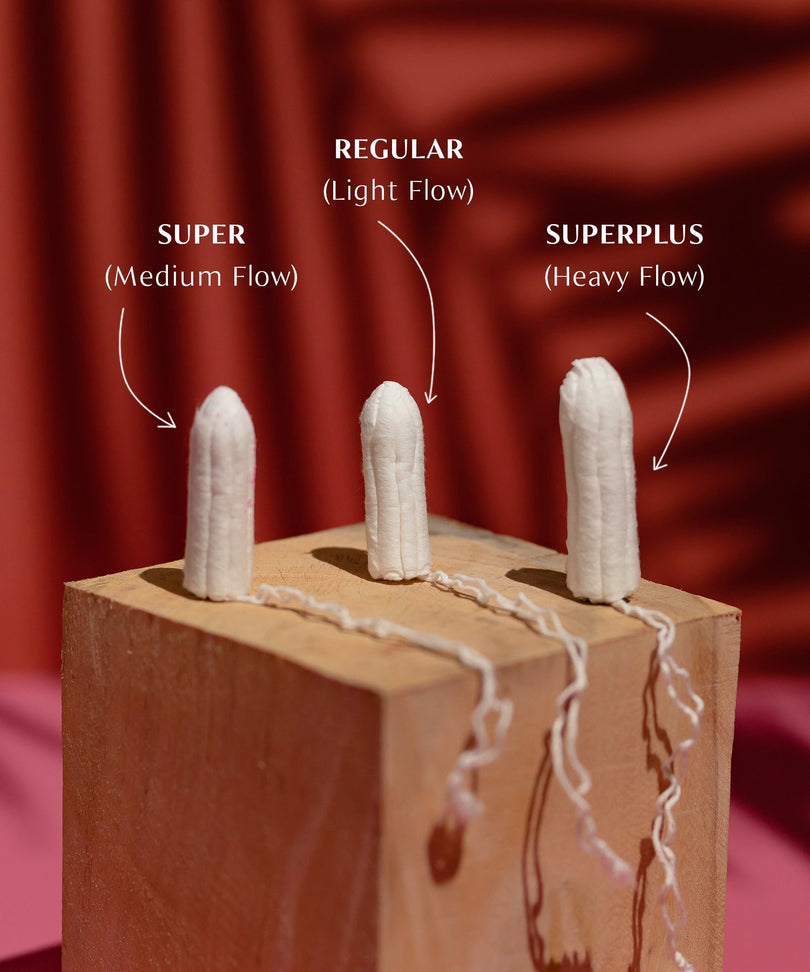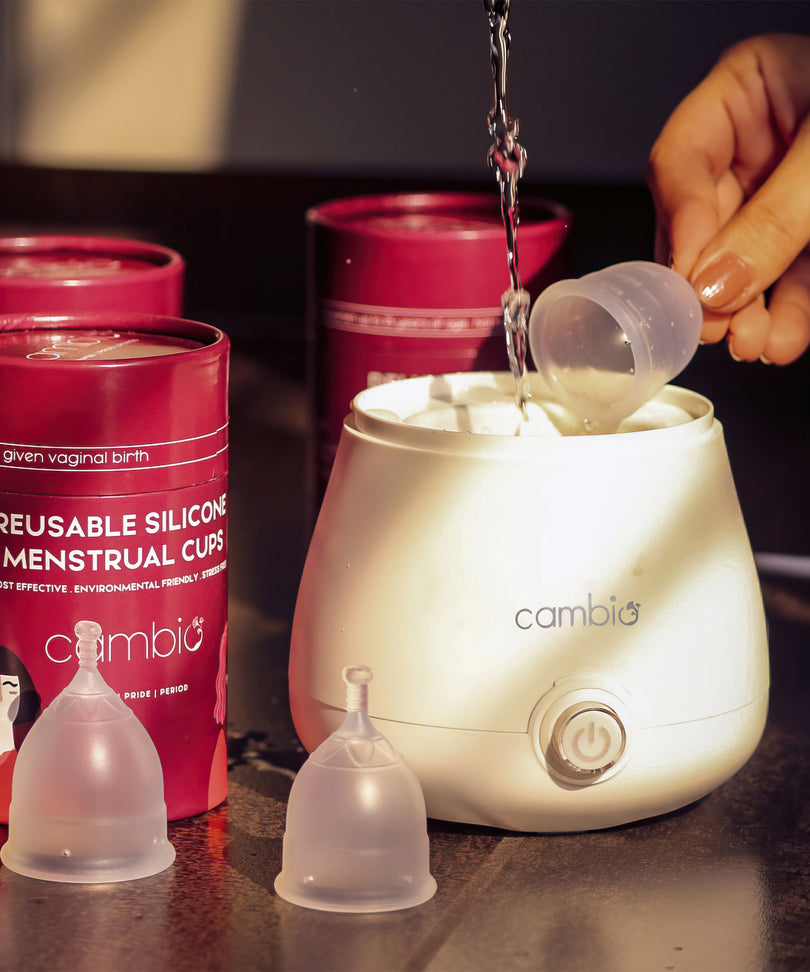Why am I seeing blood clots during periods?
During a menstrual cycle, the uterus sheds its lining, along with blood, tissue and mucus. During this shedding process, the menstrual discharge collected at the bottom of the uterus is released gradually through contractions of the uterus and the cervix.
The body releases anticoagulants to thin the menstrual discharge so that it can pass with ease. Blood clots are formed when the blood flow is faster than the body is able to produce and supply more anticoagulants.
Menstrual blood clots are most commonly formed during heavy flow days, which tends to be during the beginning of the period.
What do period blood clots look like?
Period blood clots can vary in size, shape, and color. They can be small, which is about quarter-sized or even smaller. These small clots are very common and generally harmless. On the other hand, some clots can be larger sized, more than a quarter, but they are less common and usually not a cause for concern unless you experience other symptoms.
Most clots are a dark red or maroon color because they contain older blood. However, some period blood clots can have a jelly-like consistency. This is because they're a mixture of blood cells, and tissue shed from the uterine lining and proteins that help regulate blood flow.
Also read - Hymen blood and period blood
What do abnormal blood clots look like?
Abnormal blood clots can be told apart based on their size and frequency. If a blood clot is larger than a coin or a grape, it is recommended to seek medical advice.
If your clots are accompanied by very heavy menstrual bleeding in which you’re soaking through your sanitary pads or tampons every 1-2 hours, it is a cause for concern.
If you’re pregnant or are expecting to be pregnant and you experience blood clots, it could be a sign of miscarriage and you should notify your doctor immediately.
Also read - Watery period blood - Why?
When to worry about period clots?
Here are some signs that a blood clot might be abnormal and require a doctor's visit:
- Heavy bleeding: This means soaking through one or more pads or tampons every hour for several hours in a row.
- Large and frequent clots: Passing clots larger than a quarter (like a lemon-sized clot) regularly throughout your period.
- Severe cramps: Intense pain in your lower abdomen that makes it difficult to carry on with daily activities.
- Bleeding between periods: Spotting or bleeding outside of your regular menstrual cycle.
- Heavy bleeding after childbirth: Heavy bleeding with large clots following childbirth.
If you notice any of these symptoms, please seek medical attention.
If you regularly pass blood clots or bleed heavily during menstruation, it may lead to iron deficiency anemia in which the iron in your body is insufficient to produce the optimum number of healthy red blood cells. If you’re feeling fatigued, dizzy and are experiencing shortness of breath, you should check with your health care provider to diagnose your condition.
Also read - Can I donate blood during periods?
What can abnormal blood clots indicate during periods?
Since menstrual blood clots are formed and stored in the bottom of the uterus, abnormal blood clots can be a symptom of a uterine condition.
Here are some potential causes of abnormal blood clots during menstruation:
- Endometriosis: A condition where the lining of the uterus grows outside of the uterus.
- Adenomyosis: A condition where the lining of the uterus grows into the muscle of the uterus.
- Fibroids: Non-cancerous tumours that grow in or around the uterus.
- Pelvic inflammatory disease: An infection that can affect the reproductive organs and cause abnormal bleeding and pain.
- Pregnancy issues: An abnormal blood clot can indicate an early miscarriage or an ectopic pregnancy.
- Cancer: Abnormal menstrual bleeding and clotting are some of the signs and symptoms of some cancers, especially endometrial cancer.
(Note: This isn’t a substitution for medical diagnosis. Please consult your healthcare professional for the correct diagnosis).
How are blood clots treated?
Treatment for menstrual blood clots depends on whether the cause is based on hormone levels or abnormal uterine growths or both. It also depends on whether the clots are being treated as a primary concern or if they are a symptom to an underlying condition.
Medications, usually hormonal contraceptives, are prescribed to hinder the growth of the uterine lining and subsequently reduce blood flow during menstruation. They can also slow the growth of uterine fibroids.
Birth control pills and an IUD device which releases progestin are some options for hormonal contraceptives. Alternative to hormones, tranexamic acid can control bleeding.
Surgery can also be performed to treat major conditions which also cause blood-clotting. Uterine fibroids can be removed surgically if medicine doesn’t work. Larger abnormal growths in the uterus can call for procedures like a myomectomy, in which an abdominal incision is made to access the uterus. A hysterectomy may be performed in which parts or the entire uterus is removed.
We recommend having an open discussion with your doctor to weigh out each of the treatment options to determine what suits your condition best.
Also read - Watery period blood sign of pregnancy
Conclusion
The occasional blood clot may be icky and unnerving to look at, especially if you’ve never experienced menstrual blood clots before. Don’t be alarmed if you pass blood clots occasionally.
If your blood flow is unusually heavy, you may want to take your doctor’s advice to reduce blood flow, along with focussing on eating a healthy, nutritious and balanced diet.
You can speak with your doctor to verify if your blood clots aren’t a symptom of a more severe condition.
More to read
Why is my period blood only coming out when I pee?
Vaginal discharge after periods









